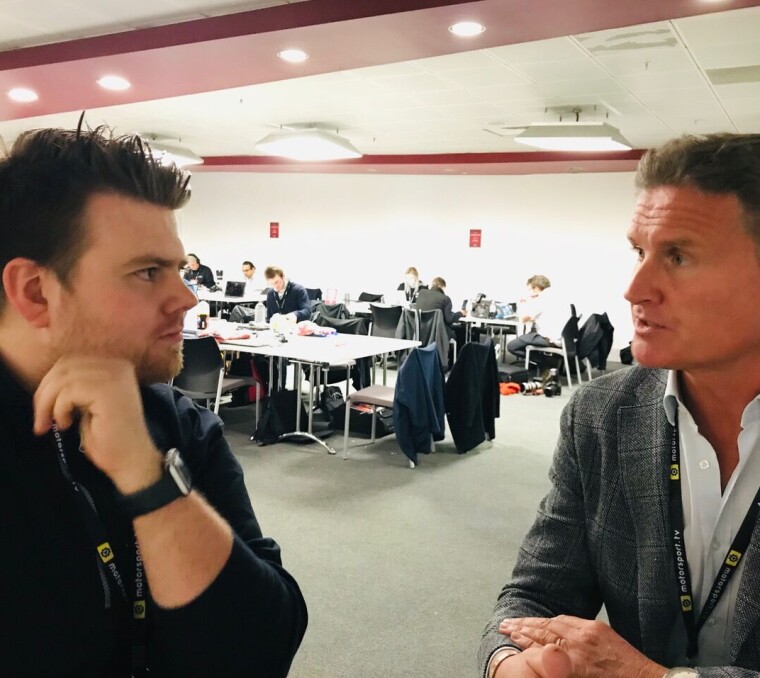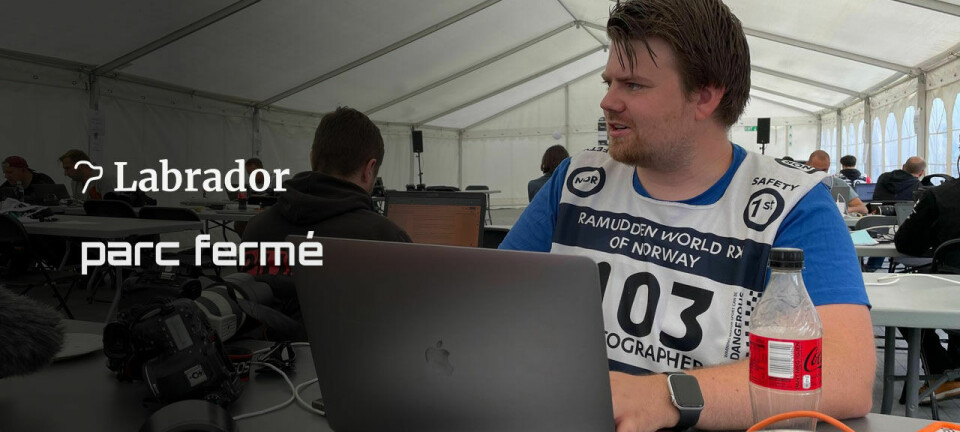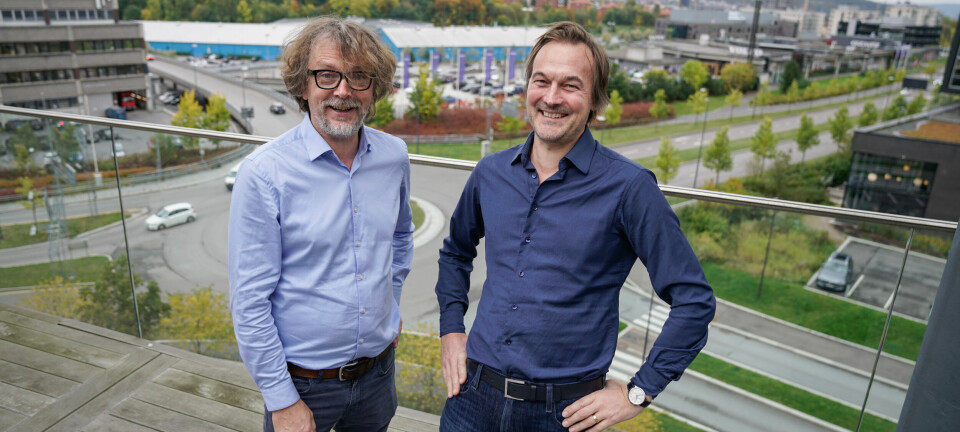
Motorsport on the road with Labrador
Entrepreneur, journalist, and editor Simen Næss Hagen needed a tool to make his work easy. That tool is called Labrador CMS.
Motivation and hard work are not enough for motorsport journalist and Viaplay commentator, Simen Næss Hagen. Especially when the aim is to cover all aspects of motorsport. He needs something that makes it simple to publish good content.
– I take pictures, make videos, and write short and long texts about everything within motorsports. Then I publish using Labrador CMS. And it looks incredibly professional, says Simen Næss Hagen, journalist, editor and founder of the Norwegian motorsport website Parc Fermé.
He sums up:
– Labrador is such a simple tool that it significantly increases the efficiency of content production, which means that I can produce much more content in a shorter space of time than I was able to do before.
With Labrador on board
Journalism is Næss Hagen’s top priority, despite the fact that compared to other journalists he has an above average interest in all the technicalities that lie between journalism and the published material.
– My interest started at sixth form college with an optional subject in newspaper design. I loved making good templates for articles and front pages, he says.
As a busy editor and journalist, he is of course also keen to have an easy-to-understand and user-friendly publishing tool. It saves him time and money.
– I started with the regular CMS solutions, using various plug-ins for different functions, but I was never completely satisfied, he says.
Næss Hagen wanted something that delivered immediately, without too much technical explanation.
– After noticing that several of the websites I visit on a daily basis use Labrador, I became extremely curious to find out more about it, he says and adds:
– And then I was given the opportunity to test it thoroughly before I chose to sign a contract with Publish Lab. The testing process convinced me. It is now almost a year since the transition to Labrador and I have no regrets.

Simen Næss Hagen. In conversation with Formula 1 legend David Coulthard during the international motorsport exhibition in Birmingham in 2020. Photo: Matt Bishop
It started with Dagbladet
The history of Labrador started a long time before Parc Fermé saw the light of day. When Dagbladet was looking to change its CMS system in 2006, they started from scratch and established the company, Publish Lab. That is how Labrador CMS became a reality.
– The potential was too great for it to remain an internal solution for just one Norwegian media house. The system has been shown to work well for organisations ranging from one-person businesses to large media groups with several million unique users every day, says Allan N. Hansen, who works for Publish Lab in Denmark.
In 2013, TV 2 in Norway joined the ownership of Publish Lab. They also use Labrador for their news, sports, and entertainment platforms. Labrador is continuously maintained and upgraded for customers. It is cloud-based and delivered as a SaaS solution.
– It could not be simpler. This is a web-based system without complicated installation on the users' own machines, says Hansen.
After having experienced success with large clients such as TV 2, Egmont, Aller Media, and Dagbladet, Labrador CMS is currently used by hundreds of websites and thousands of journalists. Labrador is now ready for the rest of the world.
– What is the secret behind the success of Labrador?
– It boils down to three things, says Hansen and lists them:
– User-friendliness, user-friendliness and user-friendliness.
He sums up:
– We say it must be so easy and intuitive that it requires minimal training. The system itself has been developed by journalists. Labrador is also used by other media house employees who need to publish content other than editorial content.
– Is Labrador also appropriate for users outside the media houses?
– There are many large companies that produce content for their own platforms and social media. Some banks and financial groups, for example, have large newsrooms with content producers. Although they do not produce independent journalism, the workflow is often the same as in the media houses. This makes Labrador suitable for their use too.

Parc Fermé in conversation with Petter Solberg during the Spanish World Championships round in rally cross in 2018. Photo: Øystein Sørensen / Smaalenenes Avis
Involving the customers
Since starting in 2016[, more than 200 websites and media houses have started to use Labrador. The list of customers is growing continuously.
– We have cracked the code for user-friendliness, especially for journalists. We are quite proud of that. Media houses in the Nordics and the rest of Europe and the world will benefit greatly from our system, says Hansen, and adds:
– Journalists are good at letting us know if something does not work well. They hate getting lost in technical user manuals. They want to keep things simple, and the reason for that is also straightforward: They want to spend as much of their time as possible on journalism.
Hansen also highlights the customers as an important part of the development team at Publish Lab:
– They have been involved from day one. Journalists and desk managers at Dagbladet asked the simple question: How can this be made so simple that all we have to do is publish? This is definitely a system based on the concept: «what you see is what you get».
Drag and drop
From Næss Hagen’s point of view, the fact that Publish Lab uses its customers actively to improve Labrador is both exciting and a good UX strategy. The users are the ones who know where the challenges lie.
– They are extremely interested in listening to their customers and the needs we have. They have a high ceiling for feedback. It is very good that they take us seriously and listen to us.
– What is the best thing about Labrador?
– There is a lot of drag and drop that makes the workflow efficient and simple.
Labrador is easily available in the cloud. If I use several screens, I can see what happens in the article and at the front end while I am writing. The system is very visual and easy to use, says Næss Hagen and adds:
– Most journalists work via a desktop, while 90 percent of media consumers read online newspapers and articles on their mobile phones. The fact that Labrador automatically adapts the front end and article to a mobile format saves me an incredible amount of time and work.

Simen Næss Hagen in conversation with double Formula 1 world champion Mika Häkkinen during an event in Finland in 2017. Photo: Morten Larsen
A passion
The dream of starting his own news website started to take serious form between Christmas and New Year in 2016. The launching of Parc Fermé took place in January 2017. During the year that followed, the website had 1.9 million page referrals.
– If you are passionate about something, you do not see all the obstacles along the way. You take a deep breath and accelerate, literally, he says.
The small one-man media house would like to grow in the long term.
– Even though the content is limited to Norwegian motorsport and international motorsport with a high level of Norwegian interest, there is a potentially large target group elsewhere in the Nordics, he says and explains that his dream is to have more employees:
– Whether I will get there one day is impossible to say right now. But as far as I know, there is no one else in the neighbouring countries who engages in motorsport journalism in the same way as Parc Fermé. It would be fun to crack that code, but before we get that far, the coverage of Norwegian motorsport can definitely improve beyond what I am capable of on my own.
– What does Parc Fermé mean?
– The name is taken from an important part of all motorsports, the technical control before and after a race. Directly translated, Parc Fermé means something like «closed park», or «closed parking». It is a closed and secured area for carrying out a technical control of the cars.

